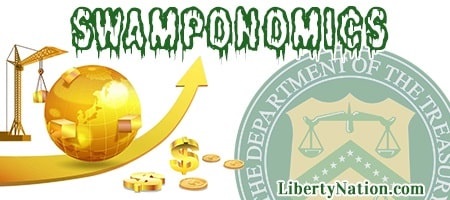The meltdown at Silicon Valley Bank has captured international attention, as everyone is offering an opinion on why the startup lender collapsed. But while many experts and officials assess why it happened, the subsequent development in the SVB storyline is the potential contagion effect. In the fallout of the capital lender in Silicon Valley, the world is learning just how immense it was and why the supposition that it is not a systemic threat might be wrong after all.
The Silicon Valley Bank Ecosystem
As of Dec. 31, 2022, 50% of U.S. venture capital-supported startups were SVB clients. Why does this matter? There are more than 130,000 VC-backed firms nationwide, meaning that 65,000 startups have banked at SVB. This is problematic should the situation spiral out of control and decimate small businesses, with hundreds of startups planning to use their cash at SVB to meet payroll next week.
As Liberty Nation reported, SVB might be acquired by a private bank, especially if that financial institution is considering expanding its venture lending business. However, there is a risk to this purchase, mainly by betting that deposits would remain intact. If clients remove their funds once SVB runs on all cylinders again, the buyer will endure all the risk. That said, hedge funds have reportedly offered to buy SVB deposits, with bids ranging from 60 cents to 80 cents on the dollar.
The other contagion threat is a widespread bank run. Billionaire investor Bill Ackman tweeted that there could be bank runs nationwide on Monday unless the Federal Deposit Insurance Corporation (FDIC) issues a system-wide guarantee, which would be almost impossible considering the entire US banking system is worth more than $22 trillion. By comparison, the FDIC maintains about $125 billion in its reserves.
But don’t worry because President Joe Biden is on the case. He spoke with California Gov. Gavin Newsom (D) on March 11 about SVB and “efforts to address the situation.” This comes after Treasury Secretary Janet Yellen met with various officials to get a grip on a possibly chaotic mess.
Money Supply Keeps Shrinking
The nation’s money supply contracted for the second consecutive month, adding to the notion that a recession is on the way. According to data from the Federal Reserve Board of Governors, the M2 money supply metric fell by 1.72% in January, down from the 1.05% slide in the previous month. This was only the second time since the central bank started sharing this data in the 1960s that it has declined.
 In total, the US money stock, which includes everything from cash to checkable deposits to shares in retail money market mutual funds, stood at $21.264 trillion, down from the peak of nearly $22 trillion in April 2022. Still, it is approximately 33% above the pre-pandemic level of nearly $15.5 trillion.
In total, the US money stock, which includes everything from cash to checkable deposits to shares in retail money market mutual funds, stood at $21.264 trillion, down from the peak of nearly $22 trillion in April 2022. Still, it is approximately 33% above the pre-pandemic level of nearly $15.5 trillion.
This is indeed one of the many recession indicators flashing red. The yield curve inversion between the two- and ten-year Treasurys inverted beyond -100 basis points. The Conference Board’s Leading Economic Index (LEI) continues to deteriorate. And yet, despite all this, the US labor market remains strong in the face of rising interest rates, tightening credit standards, and a falling money supply.
Where’s the Beeflation?
It has been a raucous few years at the local supermarket and neighborhood restaurant. We saw the toilet paper calamity of 2020, the beginning of the global food crisis of 2021, and the baby formula shortage of 2022. Then there’s the Eggflation of 2023. Is beeflation next on the list? If the treasure trove of data and industry reports are anything to go by, it is time to stock up on discounted beef at the butcher shop.
Liberty Nation has been discussing as of late – both on The C5 and Swamponomics – the possibility of skyrocketing beef prices and pockets of shortages arising over the next 12 to 18 months. Recent data show that US cattle inventories are diminishing as the number of beef cows has collapsed to its lowest level since 1962. This has cash markets soaring to a nine-year high of $165 per 100 pounds.
Beef and veal prices had been on a downward trend in recent months, thanks to farmers liquidating their supplies prematurely due to surging animal feed, labor, and utility costs. They will need to rebuild their herd again, which will take plenty of time. As a result, grocery store beef prices will reignite their upward trajectory and potentially refuel rampant food inflation. Perhaps the price of beef will be worth more than Silicon Valley Bank!



